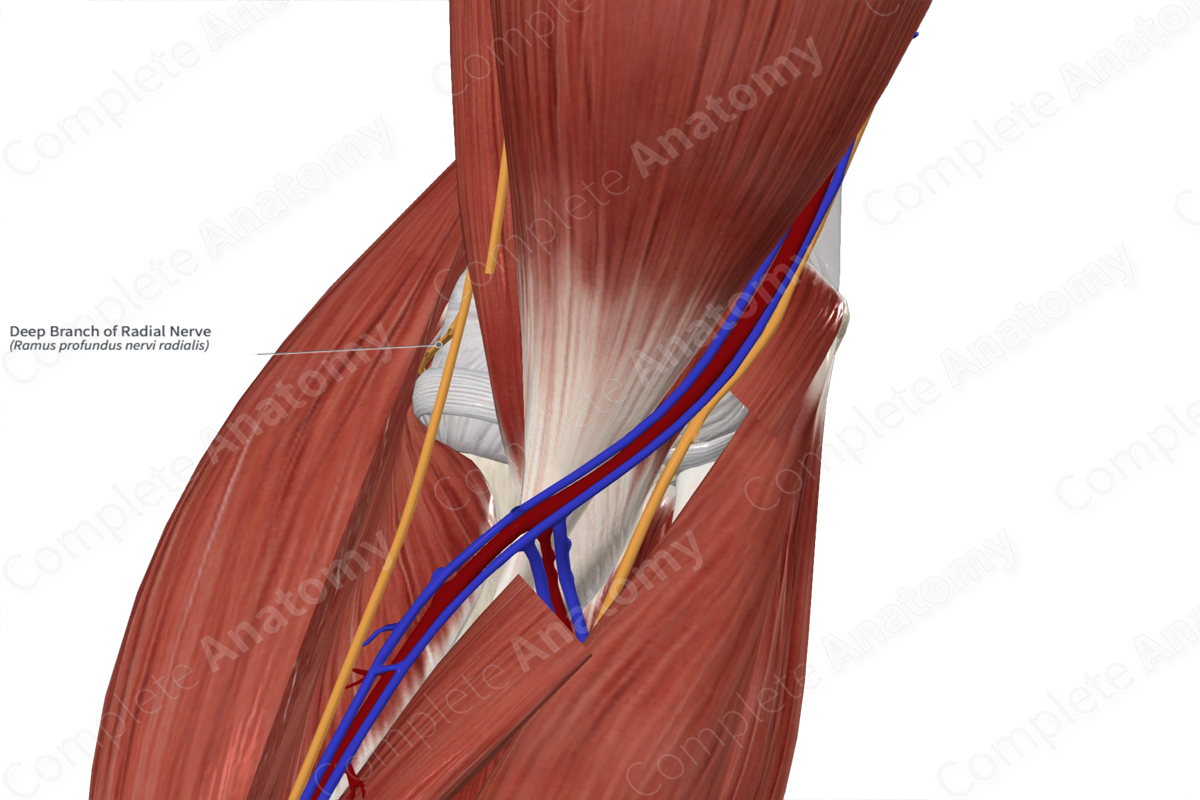
Quick Facts
Origin: Terminal branch of the radial nerve (C7—T1).
Course: The nerve leaves the cubital fossa and passes through the supinator muscle to descend between superficial and deep layers of extensor muscles of the forearm.
Branches: Muscular and articular branches.
Supply: Extensor carpi radialis brevis, supinator, extensor digitorum, extensor digiti minimi, and extensor carpi ulnaris muscles.
Related parts of the anatomy
Origin
The radial nerve divides into its deep and superficial terminal branches in the cubital fossa at the level of the lateral epicondyle of the humerus. The deep branch contains motor nerve fibers from the C7—T1 cervical spinal segments.
Course
The deep branch is a terminal branch of radial nerve given off in the cubital fossa, at the level of the lateral epicondyle of the humerus. The nerve leaves the cubital fossa and enters the back of the forearm by passing between the two planes of fibers of the supinator muscle.
It is to be noted that the posterior antebrachial interosseous nerve is considered to be a branch (or a continuation) of the deep branch of the radial nerve; however, some authors use these names interchangeably. Strictly speaking, the deep branch of the radial nerve innervates brachioradialis and extensor carpi radialis longus muscles, and then descends between the two heads of supinator muscle. Once the deep branch exits underneath the supinator muscle, it is referred to as the posterior interosseous nerve.
Branches
The deep branch gives muscular branches to the abductor pollicis longus, supinator, and extensor muscles of the forearm. In addition, it also gives off articular and sensory branches.
Supplied Structures
Before piercing the supinator, branches are given to the brachioradialis, extensor carpi radialis longus and brevis, and the supinator.
Learn more about this topic from other Elsevier products
Radial Nerve

Radial tunnel syndrome: The radial tunnel refers to the segment of the radial nerve between the lateral intermuscular septum and the supinator.




